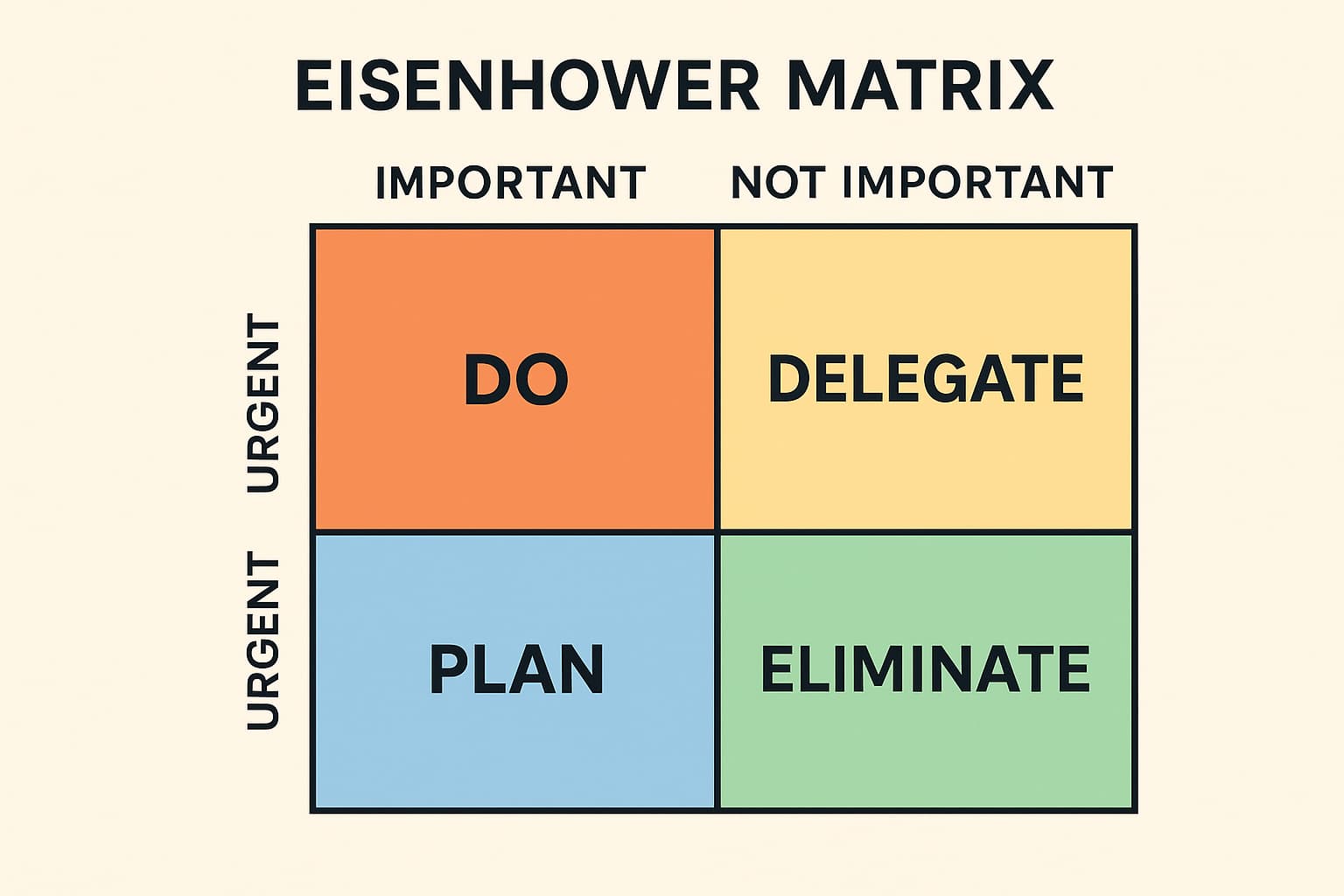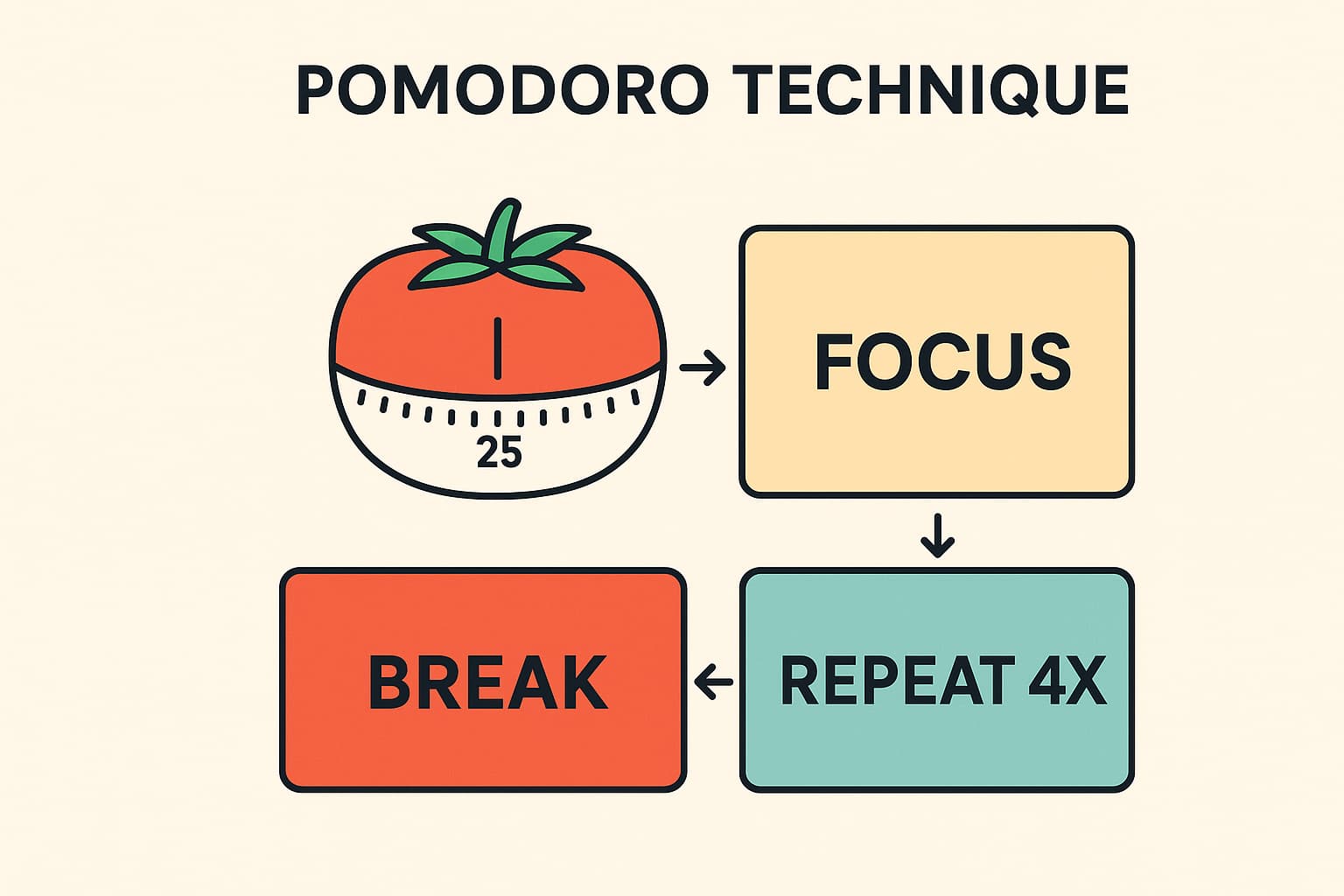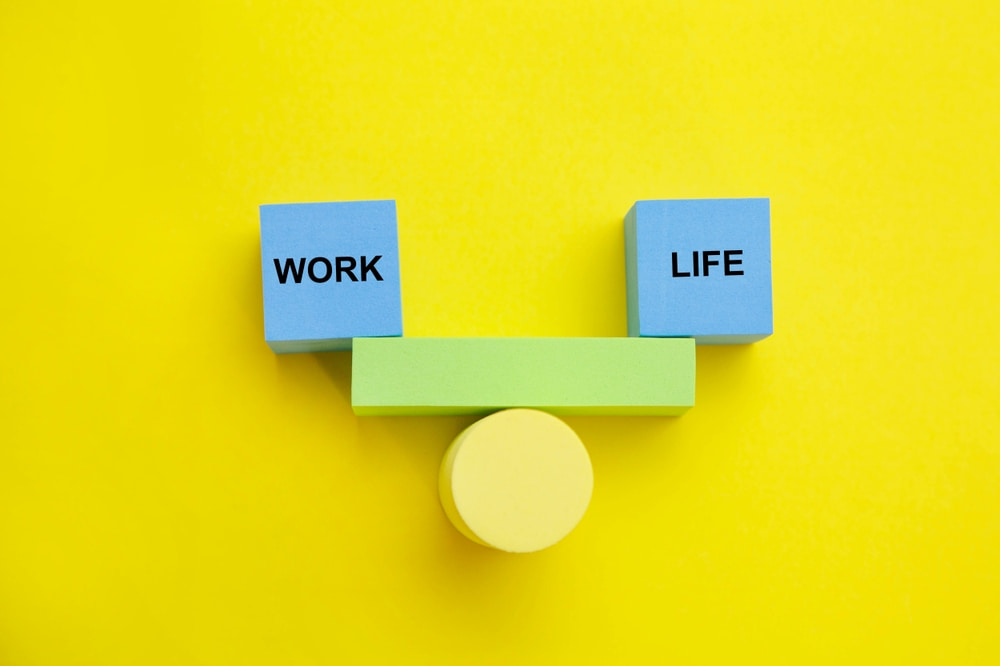Best time management strategies for a balanced life


Many people find it difficult to balance work, family, social responsibilities, and personal care. But the key to a happy and healthy life is proper time management.
When we plan our time properly, not only does our work efficiency increase, but our stress also decreases. As a result, our lives become more peaceful, organized, and balanced.
Today, in this article, we will learn about the Best Time Management strategies for a balanced life, some effective strategies that will make your day more productive and keep your mind at peace.
The Importance of Time Management
A good plan is to do your work at the right time. It focuses your important work in such a way that you can do it very well at the right time. Time management is the practice of consciously controlling the time spent on activities that lead to specific goals in order to increase performance, efficiency, and effectiveness.
The main goal of time management is:
To do the right thing,
at the right time,
correctly.
Why is the importance of time management essential?
1. Increase productivity: As a result of time management, we learn to prioritize work. This results in getting important tasks done first, increasing focus, and the ability to get more done in less time.
2. Reduced stress: When you have a clear plan and tasks are completed on time, the pressure of last-minute rush or ‘deadlines’ is reduced. This helps reduce anxiety and stress.
3. Easier to achieve goals: By managing time efficiently, you can make regular progress towards your long-term and short-term goals. If each day can be linked to a goal, success is easier to achieve.
4. Improved decision-making: Instead of working in a hurry, when you allow enough time to complete the task, you can think through each step and make the right decisions.
5. Establishing work-life balance: By using time wisely, you can set aside time for work. As a result, after work, there is time for family, friends, health care, and personal hobbies, which are essential for a balanced life.
6. Increased confidence: The feeling of being able to complete tasks on time and successfully achieve goals increases confidence and encourages you to take on bigger challenges in the future.
Prioritization Techniques
1. Eisenhower Matrix


This is a very popular technique that divides tasks into four categories according to their urgency and importance. The most important aspect of time management is determining which tasks to do first and which to do later.
This is where the “Eisenhower Matrix” plays a great role.
It was created by former US President Dwight D. Eisenhower, who said —
“What is important is rarely urgent, and what is urgent is rarely important.”
1. Urgent and important
These tasks need to be completed immediately (e.g., work nearing a deadline, crisis).
Do it immediately
2. Important, but not urgent
These tasks are important to achieving future goals, but do not need to be done immediately (e.g., long-term planning, health care).
Set a schedule
3. Urgent, but not important
These tasks demand your attention, but are not that important for the goal (e.g., unnecessary meetings, a few emails or phone calls).
Delegate/Delete
4. Neither Urgent nor Important
These tasks are just time wasters (e.g., excessive social media scrolling, long chats).
Delete
2. Pareto Principle or 80/20 Rule
This principle is named after the Italian economist Vilfredo Pareto. It states: “20% of your work produces 80% of your results.”
Method: Look at your to-do list and figure out which 20% of tasks will bring the most (80%) results, value, or satisfaction to your life or work.
Application: Give those important 20% of tasks the highest priority and try to complete them early in the day. This will help you get more done with less effort.
3. The ABCD Method
This method helps you categorize tasks based on their relative importance.
A (Must Do): These tasks must be done. Not doing them can have serious consequences. These tasks should be your highest priority.
B (Should Do): These tasks are important, but not as urgent as A. Doing them will give you good results, but not doing them will not cause serious harm.
C (Nice to Do): These tasks are nice to do, but they have no negative consequences. Do these tasks when you have time (e.g., organizing unnecessary documents).
D (Delegate): Delegate tasks that someone else can do as well as you or better than you.
E (Eliminate): Eliminate tasks that do not add value and can be eliminated.
Using these strategies, you will not only be able to organize your day’s tasks but also ensure a balanced life by making good use of your time.
Effective Time Management Methods
1. Pomodoro Technique


This method is based on working with great concentration for short periods of time, which helps to eliminate mental fatigue.
Method:
Set a timer for a single task for 20-25 minutes.
Work on that task with maximum concentration until the timer runs out.
Take a short break of 3-5 minutes when the timer goes off.
Take a long break (15-30 minutes) after completing every four ‘Pomodoros’ (25-minute tasks).
This is effective for maintaining focus for a long time and maintaining the pace of work.
2. Time Blocking
Time Blocking is the act of blocking out specific times in your calendar or planner for each task of the day. It is a method of creating an active schedule.
Method:
Identify your daily routine and tasks
Set a specific time for each task, meeting, and even personal tasks (e.g., checking email, exercising) and rest.
Block out those times on your calendar or planner and only do that task during those blocks.
This ensures you have the time you need for each task and gives you a clear idea of where your time went at the end of the day.
3. Break down tasks
Break down large and difficult tasks (which are easy to procrastinate) into smaller, more manageable parts.
Method:
Identify a large task (e.g., ‘create a report’).
Break the task down into smaller steps (e.g., ‘gather information’, ‘create an outline’, ‘write a first draft’, ‘proofread’).
Set a time limit for each small step and complete it gradually.
This makes the task less intimidating, provides motivation to start, and gives you a sense of accomplishment by completing each small step.
4. The Two-Minute Rule
A simple and quickly method of time management.
Method: If a task can be completed in two minutes or less, do it immediately. Don’t put it off until later by adding it to your to-do list.
Benefits: It quickly clears up small piles of work (e.g., quickly replying to an email, washing a dish, organizing a file) and helps you avoid clutter.
Skills to say ‘no’
When your colleague may bring you a request during your important work, you may not be able to do it, thinking about the relationship. This wastes your valuable time, and it takes longer to complete your work. So, you need to develop the skills to say no in this office work.
Importance of saying ‘no’:
1. Protecting priorities: When you say ‘no’, you protect the priorities you have set. This ensures that your time is spent only on the most important tasks to achieve your goals.
2. Reducing stress: Taking on extra work or responsibilities creates stress. You can maintain your peace of mind by rejecting unnecessary requests.
3. Setting boundaries: Saying ‘no’ clarifies your personal and professional boundaries. People understand that your time is valuable and will make thoughtful requests of you.
4. Ensured quality of work: By taking on less work, you can give maximum attention to each task at hand, thus improving the quality of work.
Attention and distraction control
Say no to multitasking
Many people think that multitasking saves time, but this is actually a misconception.
A study by Stanford University found that people who multitask are less focused, more distracted, and slower at processing information. In the words of the study,
“Heavy multitaskers are worse at filtering irrelevant information and switching between tasks efficiently.”
When you are doing one task and start another task at the same time, you may feel like you can do two tasks at once, but when you start a new task, it takes energy and time to focus on that task, and this is called ‘cognitive switching cost’.
A study by the American Psychological Association (APA) said,
“Switching between tasks can cause productivity losses of up to 40%.”
That is, changing tasks in between tasks causes the brain to repeatedly ‘set up’ anew, which can waste an average of 15 to 25 minutes of time.
Develop the habit of single-tasking. Focus on only one important task at a time until it is completed.
Digital Distraction Control Techniques
When we are doing important work, a notification comes to our mobile or phone, and we see it, which causes our attention to be lost. And it takes about 23 minutes to regain attention.
University of California, Irvine researcher Gloria Mark has shown,
“After being interrupted, it takes an average of 23 minutes and 15 seconds to return to the original task.”
That is, once attention is lost, it takes an average of more than 23 minutes to return to that state!
And to avoid this problem, turn off the notifications on your phone, laptop for a specific time. Stop using your mobile frequently during work. Keep the phone away from your workspace.
Controlling Environment and Enhancing Focus
Keep your work desk clean and do not let excess items or garbage accumulate around it. If possible, work in a place where there is less outside noise. If that is not possible, you can use headphones or earplugs to reduce noise. Some people prefer to work with ‘browse noise’ or light instrumental music. This helps to divert attention from external noise.
Work-life balance


Work-life balance refers to maintaining a stable and healthy relationship between fulfilling professional responsibilities and allocating time for personal health, family, hobbies, and entertainment. This balance can be achieved through effective time management.
An unbalanced life not only increases mental stress but also leads to physical illness and deterioration of family relationships. Therefore, the following strategies are very important to maintain this balance:
1. Setting personal time boundaries
Set work hours: Set a specific start and end time for your daily work and stick to that time. For example, strictly avoid answering emails or office phones after work.
‘Unplug’ time: Turn off all your official devices at a specific time of the day (such as an hour before dinner or bedtime). This helps the brain rest from work.
Weekly Breaks: Completely disconnect yourself from everything work-related during weekends. Save this time for family and personal hobbies.
2. Prioritize Personal Care
Taking care of your mind and body is essential to working effectively. These things should not be left out when managing your time.
Adequate Sleep: Never neglect sleep due to work pressure. Allocate time for 7-8 hours of sleep every night.
Physical Activity: Block a specific time of day (e.g., 30 minutes) on your calendar to exercise, walk, or do yoga.
Nutritious Meals and Breaks: Instead of working continuously, take small breaks in between work and eat healthy meals at the right times.
3. Allocate time for hobbies and socializing
Time management is not just about organizing work, but also about organizing sources of joy.
Add to calendar: Spending time with your family, meeting friends, or time for your hobby, all of these things should be on your calendar just like important meetings.
Quality time: When you spend time with your loved ones, give them your full attention. Put your phone away and enjoy the moment.
4. Flexibility and adaptability
Balance doesn’t mean dividing each day equally. Rather, it’s about adapting to life’s needs over time. Some days, work pressure may be high, while on other days, you can increase your personal time. Be prepared to make small changes to your schedule depending on the situation.
Use of technology and tools
1. Digital calendar apps
It acts as a central place for your schedule, meetings, and personal events.
Functionality:
Time blocking: Helps you block out specific times for your work blocks, meetings, and personal events.
Reminders: Automatically remind you of upcoming deadlines or events.
Sharing: Easily share schedules with colleagues or family members.
2. To-do list and task manager apps
These apps help you organize and prioritize your daily and weekly tasks.
Functionality:
Prioritization: You can prioritize tasks (e.g., using the Eisenhower Matrix) or add deadlines.
Breakdown: Allows you to break down large tasks into smaller subtasks.
Tracking: Tracks your progress on how much work you’ve completed.
3. Attention and Focusing Tools
These tools are great for keeping yourself away from distractions.
Functionality:
Pomodoro Timer: Helps you track your work and rest time according to the Pomodoro Technique.
Website/App Blocker: Blocks access to certain distracting websites or apps while you’re working.
4. Note-taking and idea-capturing tools
These tools are used to quickly jot down ideas or important information that comes to mind, so that you don’t have to interrupt your main work.
Functionality: Instantly saves thoughts or ideas so that you can focus on them later.
Popular tools: Evernote, Google Keep, OneNote.
Using technology strengthens your time management. However, remember, before using any tool, you need to check how effective and comfortable that tool is for you. Let technology be your slave, not your master.
FAQ
Q: What is the most effective time management strategy for maintaining balance?
A: The Eisenhower Matrix is highly effective-it helps you prioritize tasks based on urgency and importance, ensuring you focus on what truly matters and avoid unnecessary stress.
Q: How can I stay consistent with time management techniques?
A: Start small with methods like the Pomodoro Technique or daily task planning. Set realistic goals, review progress weekly, and adjust your schedule to stay flexible and consistent.
Key Takeaways Best time management strategies for a balanced life
Time is a resource that once lost, you never get back. So, proper time management is not just about getting work done, but also about organizing your life properly.
These techniques, such as the Eisenhower Matrix, the Pomodoro Technique, or the Time Blocking method, not only increase productivity but also restore mental peace and balance in life.
Remember, the better you plan your time, the easier, happier, and more fulfilling your life will be.
Start today, take control of your time, and make your day truly meaningful.
“Ready to level up your wellness? Subscribe to CoreWellFit now.”









